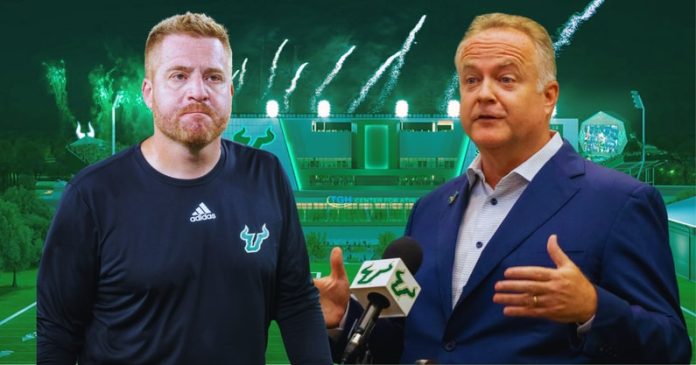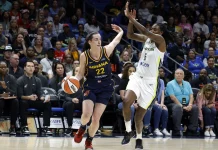
The Pac 12’s strategic move to target the top four teams from the American Athletic Conference—Memphis, Tulane, South Florida, and the University of Texas San Antonio—aimed to create a presence in all four time zones, potentially forming the premier G-5 conference in the nation. The envisioned Pac 12, with the inclusion of Boise State, Colorado State, Fresno State, San Diego State, and Utah State alongside the original members Oregon State and Washington State, promised to be formidable.
Nevertheless, the final offer to Memphis, Tulane, South Florida, and UTSA failed to persuade them to join the expanded conference. Since SMU had to pay the AAC an exit fee of $25 million to transition to the ACC, the Pac-12’s proposal of only $2.5 million per school to the AAC Big Four left Memphis, Tulane, USF, and UTSA facing a potential $22.5 million exit fee. This, coupled with the uncertainty of a future media deal, presented too significant a risk for them to accept.
The four schools pledged their williness to stay in the AAC after conversations with commissioner Tim Pernetti who explained that he is exploring avenues for revenue enhancement, including private-equity involvement, new distribution models and further expansion of the league footprint. Pernetti has a number of idea’s on how to get more money for the conference and you can read more about it in this interview he had with Front Office Sports.
USF Vice President of Athletics, Michael Kelly, emphasized that within five to six years, the major media rights agreements with conferences are set to expire, potentially reshaping the collegiate sports landscape. This coincides ideally with the opening of USF’s on-campus stadium. Kelly aims to position the Bulls favorably, making them a desirable addition for conferences such as the ACC or the Big 12.
It starts with winning and Kelly’s coaching hires of Alex Golesh and Amir Abdur-Rahim in his inaugural year as head football and basketball coach, respectively, proved to be successful. Golesh led the football team to a six-win season, culminating in a bowl triumph over Syracuse, while Abdur-Rahim steered the Bulls to their first AAC Championship and a subsequent NIT appearance.
The athletic success has energized not only the nearly 50,000 on-campus fans but also a significant portion of the over 384,000 USF alumni, many of whom reside within 50 miles of the Tampa Bay area. The city of Tampa, along with the broader Bay area, is quickly becoming a stronghold of supporters, with both the football and basketball teams attracting some of the largest crowds among all Group of Five and even some Power Four schools.
“It’s all about being in the top tier,” USF athletics director Michael Kelly told On3’s Mike Singer in an exclusive phone interview Tuesday. “No one knows in five years if there’s even a P4 or if there’s one group of 50 or 80. I don’t get too caught up with the specifics of a conference, but I know we’re on the radar of the current P4, and we’re focused on making the American the strongest it can be as well. It’s important to be the man where you stand. Rest assured, we are in constant conversations and are always evaluating opportunities to determine what’s best for USF.”
In the On 3 interview, Kelly emphasized the significance of USF aspiring to be a top-notch athletic program, highlighting the relentless effort being put into achieving this goal. Upon his arrival at USF in late 2018, Kelly inherited considerable challenges. However, by 2024, the situation has improved markedly, evidenced by the athletic budget doubling from $50 million per year at his start to the current $100 million.
The budget positions USF among the top of all G5 schools and on par with Big 12 members such as Kansas State, Cincinnati, and their old rivals at UCF. In fact, it is larger than the ACC’s Boston College, and comparable to North Carolina State, Syracuse, and West Virginia, among others. However, for greater accuracy, it’s worth noting that both the Big 12 and the ACC receive larger payouts as P4 members from bowl appearances and NCAA Tournament payouts, which increases their revenue intake over the AAC.
Kelly put forth how the USF is working on cutting edge on campus facilities beyond of course the stadium as he told On3. “I think it’s getting lost because we’re just talking about the stadium, but we’re building an operations building and a stadium simultaneously, and it’ll be adjacent to the indoor facility. Very few places at any level have that type of efficiency and ability to plan for the modern student athlete — what they need.
“That’s what excites me. Schools will get new things, but they’ll be a mile or two apart. It’s going to be so efficient not only for our football program, but it’s going to extend to our whole athletic department. From where I’m talking to you right now in the Selmon Center, I can touch every one of my facilities and talk to my coaches within a 300-yard radius.
Further down in his On3 interview he addressed how USF handles the all important matter of NIL Kelly was very open in his answer “There’s few in G5 and even P4 that do NIL as we do. There might be some that have more resources, but we have adapted to modern times and are one of the few that have focused on building an NIL unit of several full-time people who are dedicated to not only what’s permissible now, but what’s going to be available if the settlement goes through. We want to serve all of our programs in a modern, elite way to make sure we’re at the very top of NIL.
“We’re proud of our modernized approach to college sports. Our NIL unit, led by Andrew Warsaw, is a perfect fit for us. We’re going to be among the top of the revenue sharing era.”
TO READ THE ENTIRE INTERVIEW WHICH I HIGHLY RECOMENT – CLICK HERE






